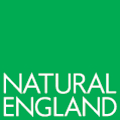Submitted by Lee Walker on
One of the vital monitoring programmes that the Predatory Bird Monitoring Scheme operates is to measure the levels of second generation anticoagulant rodenticides (SGARs) in predatory birds. The Health and Safety Executive, the body responsible for regulation of rodenticide use in the UK, has identified our monitoring of SGARs in barn owl carcasses as a key way of assessing some of the environmental impacts of the newly launched Anticoagulant Rodenticide Stewardship Programme (for further details, click here).
Lee Walker, coordinator for the PBMS, explains how you can help with this monitoring, “Our studies rely on members of the public submitting birds that they have found dead. Most of the barn owls we receive have either been hit by motor vehicles or have died of starvation. However the majority, about 90%, have detectable levels of SGARs in their livers.”
“Factors such as the age of the bird can affect the liver SGAR concentrations in the bird and so it is important to receive as many barn owls as possible in any given year as this allows us to account for these factors in our analysis.”
To help increase awareness of this work and that anyone can help the scheme by submitting a bird to the PBMS for examination, we ask that you forward this news item to friends, share it on social media, and you are also welcome to print out our ![]() PBMS A4 poster.pdf to pin display in an appropriate place
PBMS A4 poster.pdf to pin display in an appropriate place






